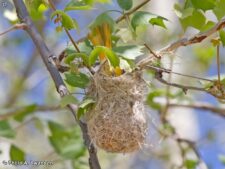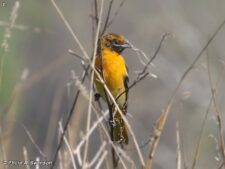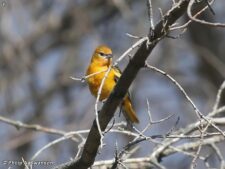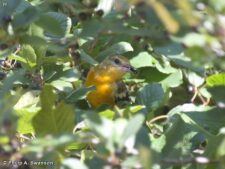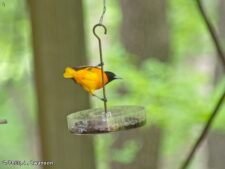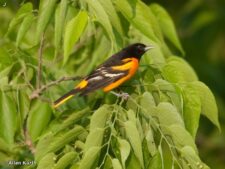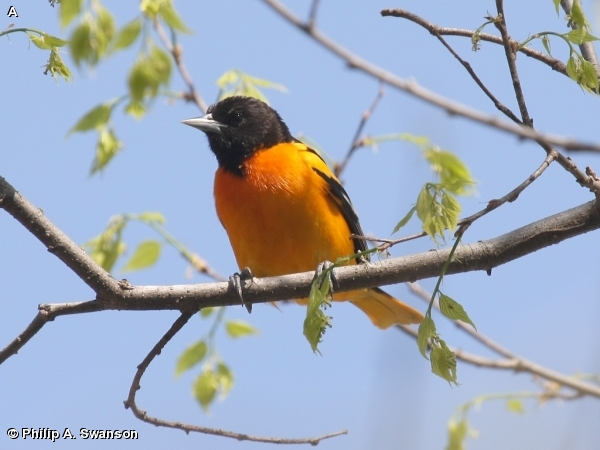
8.0 inches long. The Baltimore Oriole has a sharply pointed blue-gray bill. The breeding male has a black hood, back, and tail. It also has a bright orange rump and underparts and orange tips on the outer tail feathers. The wing is black with an orange shoulder patch and white-edged feathers that appear as bars. The female has brownish gray upperparts and a dull yellowish-orange breast and undertail coverts with varying amounts of black on the head and throat. There are two bars on the wings. The male will molt to a plumage similar to a female beginning in late July prior to migrating south.
The Baltimore Oriole is a common summer breeder that arrives by late April and leaves by early September although some birds may be seen through late October.
For a while this bird was combined with the Bullock’s Oriole and was called the Northern Oriole. It has since been re-split and is again called the Baltimore Oriole. It was originally called a “Baltimore bird” since its color of black and orange were the colors of the Baltimore family, colonial proprietors of the Maryland colony. It flies in a strong swift direct flight on rapid wing beats. The Baltimore Oriole forages for caterpillars, fruit, and nectar in low brush and higher in trees. It will regularly come to feeders, especially for grape jelly and nectar. The nests are woven pouches or hanging bags of plant fibers suspended from twigs. When silent it can be surprisingly hard to see even with its bright coloration. The song is a series of 2-note rich whistles “pidoo, tewdi, tewdi, tew”. A two note whistle such as “hulee” is often heard. The call is a harsh uneven chatter.
Disclaimer: The content of NatureSearch is provided by dedicated volunteer Naturalists of Fontenelle Forest who strive to provide the most accurate information available. Contributors of the images retain their copyrights. The point of contact for this page is: Phil Swanson.



